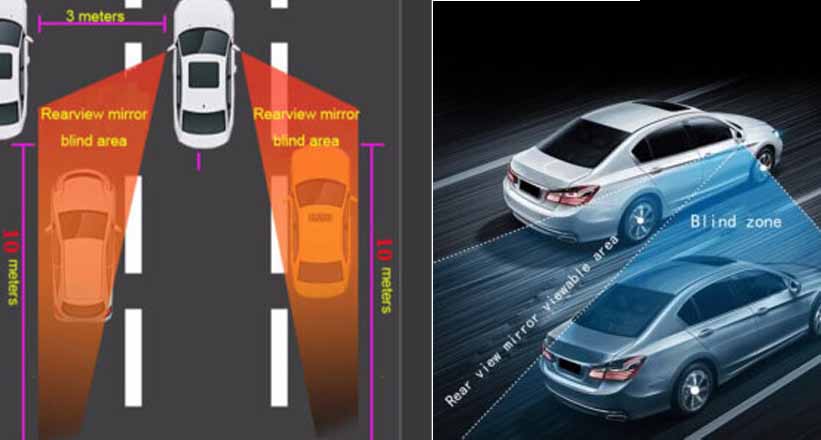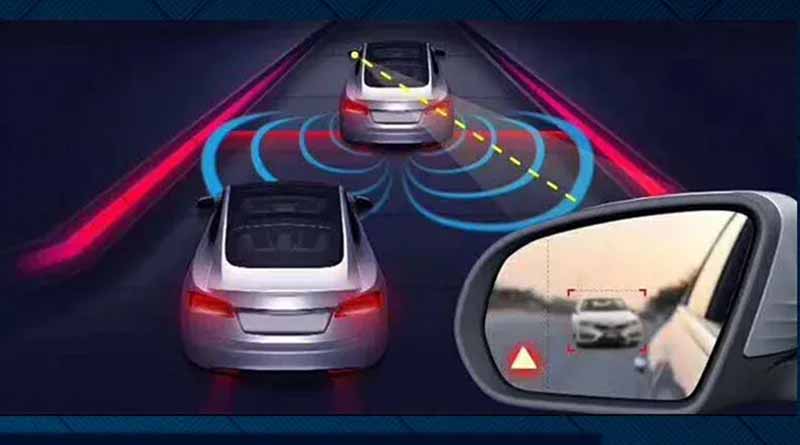In an era of rapid technological advancement, one area that has seen remarkable progress is automotive safety. With the increasing number of vehicles on the road, it’s imperative to continuously develop and implement technologies that reduce accidents and save lives. Blind spot monitor technology is one such innovation that has made significant strides in enhancing safety on the road.
Understanding the Blind Spot
Before delving into the significance of blind spot monitoring technology, it’s essential to understand what a blind spot is. A blind spot in a vehicle refers to the area around the vehicle that cannot be directly observed by the driver while operating the vehicle. This blind spot is typically situated to the sides and rear of the vehicle and is responsible for numerous accidents and collisions on the road.
The Problem of Blind Spots
Blind spots pose a considerable risk to both drivers and pedestrians. When drivers change lanes or make turns without being aware of vehicles or pedestrians in their blind spots, it can result in accidents, injuries, and even fatalities. Statistics from various road safety organizations show that a significant percentage of accidents are caused by blind spot-related issues. This makes addressing blind spots a crucial aspect of road safety.
Blind Spot Monitoring Technology: How It Works
Blind spot monitoring technology, also known as blind spot detection or BSD, is designed to mitigate the risks associated with blind spots. It utilizes a combination of sensors and cameras to continuously monitor the areas around the vehicle that are typically obscured from the driver’s view. Here’s how it works:
- Sensors: Blind spot monitoring systems use sensors, often placed on the sides and rear of the vehicle. These sensors emit radar waves or ultrasonic signals, which bounce off nearby objects and return to the sensors. The system analyzes the time it takes for these signals to return to determine the distance and location of objects.
- Cameras: In some advanced systems, cameras play a significant role. These cameras provide real-time video feeds of the vehicle’s surroundings, making it easier to spot objects in blind spots.
- Alerts: When the sensors or cameras detect a vehicle, cyclist, or pedestrian in the blind spot, the system activates visual and auditory alerts. These alerts typically appear on the side mirrors or dashboard, warning the driver of the potential danger.

The Benefits of Blind Spot Monitoring Technology
Blind spot monitoring technology offers several significant benefits in terms of safety and accident prevention:
- Accident Reduction: One of the primary advantages of blind spot monitoring is its ability to reduce accidents caused by lane-changing or turning maneuvers. The timely alerts provided by the system give drivers the information they need to make safer decisions.
- Pedestrian Safety: This technology is not only beneficial for preventing vehicle-to-vehicle collisions but also for protecting pedestrians and cyclists. Many accidents involving pedestrians and cyclists occur when drivers fail to spot them in blind spots, but blind spot monitoring can help mitigate this risk.
- Reduced Stress: Knowing that blind spot monitoring is watching out for potential hazards can reduce driver stress and increase overall confidence on the road.
- Enhanced Convenience: Blind spot monitoring systems often come with additional features such as adaptive cruise control and lane-keeping assist, further enhancing driver convenience and safety.
- Insurance Savings: Some insurance companies offer discounts to drivers who have blind spot monitoring systems installed in their vehicles, as it is seen as a proactive safety measure.
The Future of Blind Spot Monitoring
As technology continues to evolve, the future of blind spot monitoring looks promising. Here are some trends and developments to watch for:
- Improved Accuracy: Future blind spot monitoring systems are likely to feature even more accurate sensors and better algorithms, reducing false alerts and improving overall performance.
- Integration with Autonomous Vehicles: As autonomous vehicles become more common, blind spot monitoring technology will play a crucial role in ensuring their safe operation, especially when human drivers are sharing the road with self-driving cars.
- Expanding Coverage: Manufacturers are constantly working to expand the coverage of blind spot monitoring systems, making them effective in more complex driving scenarios.
- Standardization: It is possible that, in the future, blind spot monitoring technology may become a standard feature in all vehicles, similar to airbags and anti-lock brakes.
In conclusion, blind spot monitoring system has emerged as a significant advancement in automotive safety. It addresses a critical issue that has long plagued drivers and is responsible for many accidents. As this technology continues to improve and evolve, it holds the potential to greatly reduce accidents, save lives, and make our roads safer for everyone. Whether you’re a driver or a pedestrian, blind spot monitoring technology is a crucial development that should not be overlooked in our ongoing efforts to enhance road safety.
Also see:
- 2023 Tata Nexon EV facelift revealed – Gets more features and range
- 2023 Toyota Century SUV launched in Japan at JPY 25 million
- 2024 Kia EV5 electric SUV unveiled – offers up to 600 km range
- Choosing the Right Audi Service Center in Maidstone
- The Cost To Ship A Car, As Explained By A-1 Auto Transport



